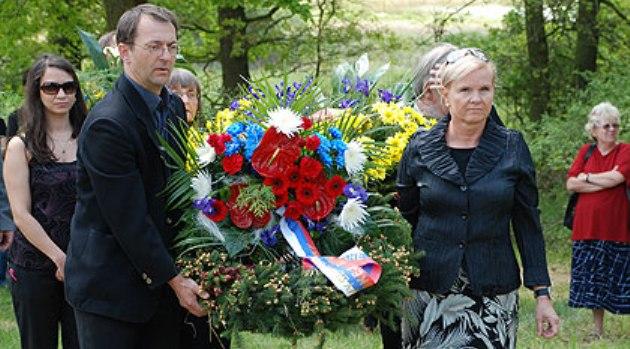Commentary: In the Czech Republic, the Roma's image could get them killed

This past spring the third – and so far the greatest – wave of anti-Romani protests has risen up in the Czech Republic. The first such wave, from 2007-2009, resulted in what was the most serious arson attack to date on a Romani family here in the town of Vítkov, and in the arrest of the perpetrators in August 2009. The second such wave, from 2011-2012, ended with a march by 2 000 people through the town of Břeclav, where locals and out-of-towners passionately protested an alleged attack by Romani people on a 15-year-old boy. One month later, it was proven that he had invented the entire story.
For the time being we do not know what kind of event will cap this year’s series of hate marches, but there is reason for serious concern. In addition to being strongly traumatizing experiences (mainly for the children living in the targeted buildings), each such march creates the conditions for sparking criminal behavior among those participating in them – the more marches one goes to, and the more support one feels from most of the local population for one’s hatred, the more willing one will be to break the law and commit crimes against the targets of one’s hate.
No sociological study here has ever comprehensively researched this phenomenon. The experience of these past few years, however, indicates that the number of assaults on individual hate targets will gradually rise as a result of this series of marches.
During the first wave of marches there were also serious organized attacks against Romani people in the towns of Benešov, Beroun, Havířov, the Janov housing estate in Litvínov, and the already-mentioned arson attack in Vítkov, which was just the last of several other less successful attempts at arson. The second wave of marches activated a group called Blood & Honour Bohemia (part of an international neo-Nazi organization), which committed an arson attack in Cheb and which, according to police, was also planning targeted attacks on politicians before police discovered the plot and detained its members – they were not remanded into custody and their trial has been delayed for almost two years.
That second wave of antigypsyism, either directly or indirectly, unleashed incidents of aggression that resulted in several fatalities. At least five Romani people died as a result of hate violence during the next six months, in Chotěbuz, Děčín, Kynšperk, Prague and Tanvald.
In only three of those cases has a criminal prosecution begun against the suspects. Two of those prosecutions have already resulted in the perpetrators serving long prison terms.
This year’s wave of antigypsyist riots seems atypical when it comes to unleashing other incidents of violence. For the time being we have heard no reports of serious violent crimes being committed against Romani people, only against members of the police.
It must be added that in previous years, as well as this year in České Budějovice, the police have kept several cases of violence targeting individual Romani people from the public for a long time, both as an investigative tactic and so the cases would not inspire an avalanche of copycats. The most widespread social impact of these anti-Romani marches, however, is on the already highly damaged reputation of Romani people in general.
News reporting about these marches, intentionally or not, conveys and enhances stereotypes and creates more stigma. The anti-Romani demonstrations are, after all, cases of people "voting with their feet".
The readers and viewers of these news reports find it easy to tell themselves "If people are taking to the streets against them and no one is standing up for them, there’s probably something to it." This makes it even harder for Romani people throughout the country to find employment, housing, or equal treatment at the hands of local authorities or police.
Everywhere they go here, Romani people are confronted with heightened prejudices and even with the fear that they might harm an eventual employer or landlord solely because of their ethnic origins. How can the Czech Republic escape this cycle?
Banning these demonstrations, as is being surprisingly called for by laissez-faire, right-wing nonprofits such as People in Need, will not help. This year more of these anti-Romani marches have taken place irrespective of whether they were properly announced or even not officially permitted.
Police have tolerated these assemblies in order to keep the demonstrators from dispersing throughout any given town. It would be hard to effectively monitor the various groups otherwise.
Decades of experience from abroad have proven that the only effective medicine against such anti-Romani waves of violence is a large demonstration by the opponents of Nazism, with high-level politicians from various parties and from all levels of politics, from central to local government, leading the way. Now, on the state holiday of 28 October 2013, when more hate marches are scheduled to take place in České Budějovice, Ostrava and Plzeň, a new civic initiative called Barevná Ostrava (Colorful Ostrava) will be holding a demonstration with the motto "We want to live together here in peace" on Svatopluk Čech Square in that town.
The members of this platform include two small political parties not seated in Parliament, various civic associations, the local Catholic bishophric and the Evangelical Church of Czech Brethren. Now it is up to the representatives of all political parties in Ostrava to show their true colors.
Should the politicians unite on this point, they have the chance to end this year’s season of hate by voting with their feet. It is time to call on the government to start working on the causes of these problems instead of only addressing their repercussions.